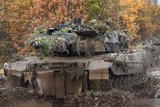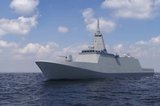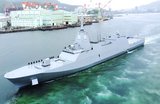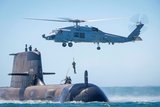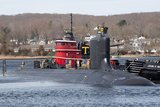Tri-national amphibious landing exercise complete
A multi-national amphibious landing exercise has been carried out by the armed forces of the US, Philippines and Japan at Katungkulan Beach, Marine Barracks Gregorio Lim, during Exercise Kamandag 3.
The ship-to-shore manoeuvre came at the end of two weeks of combined training focused on assault amphibious vehicle interoperability.
The exercise saw Philippine and US forces perform reconnaissance of the beach followed by amphibious assault vehicles from all three armed forces launching from Philippine BRP Davao Del Sur and the US Marine Corps’ USS Germantown and coming ashore. Philippine and US marines secured the objective and Japanese soldiers lead a medical evacuation disaster relief drill.
The drill’s success validated the multinational forces’ ability to conduct complex, synchronised amphibious operations.
US Marine 1st Lt Malcolm Dunlop, an AAV platoon commander with 4th Marine Regiment, 3rd Marine Division, said: ‘Today was about effectively coordinating with our allies from the Philippines and Japan. AAVs representing each country manoeuvred simultaneously to conduct a movement up the beach. It’s crucial that we know how to do things side by side, so that in the face of serious military or humanitarian crises, we can work together to overcome the challenges that face us.’
Kamandag 3 is a Philippine-led, bilateral exercise with participation from Japan.
Related Equipment in Defence Insight
More from Naval Warfare
-
![Future of the Canadian Patrol Submarine Project is still unclear]()
Future of the Canadian Patrol Submarine Project is still unclear
The Canadian government remains tight-lipped on the timeline and funding required for the next steps of its Canadian Submarine Patrol Project, which should offer improved capabilities for the country’s navy.
-
![Mitsubishi eyes future with Australia’s Mogami selection]()
Mitsubishi eyes future with Australia’s Mogami selection
With Australia’s selection of the Mogami-class for Project Sea 3000, Mitsubishi is investigating local production in the next decade as potential export opportunities emerge.
-
![Thales’ new Sonar 76Nano could equip UK Royal Navy on anti-submarine warfare missions]()
Thales’ new Sonar 76Nano could equip UK Royal Navy on anti-submarine warfare missions
The new sonar is designed to equip uncrewed underwater vessels, with the potential to be used by the Royal Navy for its Atlantic Bastion and Atlantic Net missions.
-
![Hanwha wins Australian government approval to increase its stake in Austal]()
Hanwha wins Australian government approval to increase its stake in Austal
The contract would mean the two shipbuilders can collaborate strategically and enhance shipbuilding capabilities in Western Australia.
-
![Royal Australian Navy sizes up modernisation plans for new and existing capabilities]()
Royal Australian Navy sizes up modernisation plans for new and existing capabilities
The Australian navy is pushing ahead with its efforts to modernise its workforce and capabilities while balancing risky submarine upgrades, ageing Collins-class boats and a shrinking minehunter fleet. Head of navy capability RAdm Stephen Hughes updated Shephard on the force’s progress.
-
![UK to join US Navy’s Virginia-class submarine assembly effort to speed up construction]()
UK to join US Navy’s Virginia-class submarine assembly effort to speed up construction
The expansion of the Virginia-class submarine construction to UK shores could accelerate the project as US shipbuilders continue to fall short of delivery goals.








